Kitchen Project #54: Marmalade Brown Butter cakes
+ dive into the world of marmalade, guided by Camilla Wynne
Hello,
Welcome to today’s edition of Kitchen Projects. It’s so wonderful to have you here.
Today it’s a beautiful and bright edition, with enough citrus to brighten up the final dregs of grey-grey-grey January ft. the fabulous jam goddess Camilla Wynne, and is all rounded off with a joyful + quick recipe for brown butter marmalade cakes (as good as they sound!)
Over on KP+, Camilla is sharing two recipes from her second book Jam Bake (Grapefruit & Toasted Almond marmalade + how to use it in some divine muffins) plus we’re running a special giveaway, too! Subscribing to KP+ costs just £5 and you get access to lots of extra content, inc the full archive, whilst supporting the writing of this newsletter, so please click here to check it out:
Lots of love
Nicola
Tis the season of citrus
Come January, Seville oranges appear like big fat amber jewels, adorning fruit aisles everywhere. Seville oranges are famed for their elite marmalade, owing to their intense flavour and pectin-rich rinds and cell walls. So, if you hadn’t already guessed, today we are taking an adventure into the world of marmalade. We’ll dive into the preserving process and I’ll finish off this edition with a recipe for an unassuming brown butter marmalade cake that packs a real punch.
Earlier this year, we covered soft fruit jams (in this stone fruit tart edition) but making the rich, peel-stuffed orange jelly of Paddington’s dreams is a different ball game. I’m the first to admit that I’m quite the novice when it comes to preserving, so I’m thrilled to have an esteemed guide for today’s edition: Camilla Wynne!
Camilla is a pastry chef and preservation expert - she is one of Canada’s only master preservers and runs online (and in person) workshops. She is also the author of two brilliant preserving books. Her second book ‘Jam Bake’, which came out in 2021, is by far my favourite and most-referred to pastry book from the past year.
‘Jam Bake’ is both a practical guide to the nuts and bolts of jam-making, and a multi-coloured kaleidoscope of inspirational jam-infused recipes, so you can really put your preserves to work (think cheesecake scones and chocolate damson ice cream).
I’ll be using Camilla’s wondrous wisdom to anchor today’s newsletter. I got the 4-1-1 on cowboy marmalade formulations, how sugar and pectin share the gelling load and what can (and can’t) be fixed. I’ll jump in every now to give a longer explanation of the science bit.
Alright, let’s get into it.
First things first, what exactly is Marmalade? How does it differ from Jam?
CW: I'm not sure you'd get the same answer from everyone, but I think in the English language in modern times marmalade is very much like jam but always made of citrus, including the peel.
Citrus fruits are high in pectin. Is that from the pith/skins? So, does a thin skinned tangerine, for example, have relatively less pectin than letsay, a grapefruit?
CW: The pectin is mostly in the peels, although there certainly is *some* in the membranes and seeds, with a thicker-skinned fruit having more pectin, yes, although ripeness is a factor as well-- the riper the fruit, the less pectin. In all, though, all citrus fruits are high enough in pectin that they are pretty easy to get a nice gel on.
KP notes on Ripening pectin
Pectin is a starch found in fruit, mainly in the cell walls and core. Before it’s useful applications in jam and jelly making, pectin is responsible for holding the cell walls of the fruits together. In oranges, pectin is present in the peels, seeds and the pith.
We’ve all watched fruit go from underripe, to perfectly ripe, to mush. Although there are lots of different factors to this timeline, it’s the breakdown of pectin to pectic acid that is responsible for the physical transformation into soft, squishy fruit.
Although it might be tempting to try and save fruit that’s ‘on the turn’ by preserving it into jam, beware that it won’t have much/any useful pectin left so won’t be able to set on its own. So, you’ll have to be sure to add commercial pectin to make it gel.
What is the role of lemon juice in jams? If we are making a citrussy and already acidic marmalade, should we still include lemon juice? Is that for flavour or for *science*?
CW: It's both! I always like to add it to balance the sugar a little, but it also activates the natural pectin in fruit, so it will help with the gel. It's not totally necessary with acidic citrus, but I almost always include it.
KP notes on Acid + Pectin
As we heat fruit, the pectin is extracted (with the help and activation of acid) and begins to create a network that is capable of holding liquid and thus creating a gel. Sugar, which loooooves water, assists in this process by attracting water AWAY from pectin, allowing the network to form without water getting in the way. This makes a more stable network.
The reason acid plays such a key role here is all to do with pH: Pectin molecules carry a negative charge. As we know, like-charges repel eachother, which means that pectins may struggle to interact with eachother. When we add acid, it neutralises some of these negative charges which means these pectin molecules can interact with eachother and get to work, creating bonds. These bonds, with the help of the sugar (which is keeping the water busy), provide the mesh-like network known as jelly.
Lemon juice has a pH of between 2 - 3, whilst the pH of orange is between 3 - 4. For oranges, sour sevilles will be closer to pH 3, whilst sweeter varieties, like satsumas, will be closer to pH 4.
In Jam Bake you write "so even if the spread isn't gelled per se, it's still thick" - I’d really love to understand this more! In your opinion, what makes a good set? Like, where does pectin’s responsibility begin and sugars end?
CW: Even without sugar, if you cook enough water off anything it's going to thicken, right? So pectin is important for getting a set, especially a really firm set, and especially for setting a lot of juice into jelly. The more sugar in a recipe the more easily that happens. Sugar is hygroscopic so it's going to bond to the water in the mix and hold it steady, drawing it away from the pectin and allowing it to more easily form bonds. For me, because citrus fruits are so naturally high in pectin, I expect to get quite a firm set-- still easily spreadable and melt-in-the-mouth, but holds its shape really well, like when mounded on a spoon.
In my career I’ve been shown a few different ways to make marmalade - what are your go-to methods and what are the relative benefits/disadvantages to these two techniques?
CW: So I generally use two techniques-- whole fruit and sliced fruit. You'll find examples of both in Jam Bake. The methods both work with almost all fruit, except limes turn to leather if you whole fruit them. It really all just depends on what you want the end result to be. Whole fruit tends to be a lot of peel just bound with jelly, while the sliced fruit method contains more water so you end up with more jelly with pieces of peel suspended in it. If you want a thin cut it's definitely easier to do when the fruit is raw in the sliced method.
In your sliced citrus recipes, you suggest soaking your fruit. What is the purpose of soaking your citrus in water overnight?
CW: So soaking isn't totally necessary, but it really does help soften the peels. I actually also like to macerate marmalade when possible. After the fruit is soaked overnight then cooked, I mix it with the sugar and let it sit overnight again, dissolving the sugar and letting the peel get a little heavy with it, which helps against floatation.
Before this interview, I made a rather slapdash tangerine marmalade. Although it looked great whilst I was cooking it and seemed to pass all the tests. It was looking cute and I was feeling like a jam legend, but it set very firm. As it didn’t taste scorched, I returned it to the heat and whisked it in boiling water (a shameful cowboy move) and it set-up beautifully. I’m not proud of it, but it made me wonder about over-cooking jam vs. bad formulations.
In Jam Bake, you do mention overcooking jam. For those of us that do it accidentally, is there really nothing to be done? If so, why? / Are there instances when it IS salvageable?
CW: There really isn't much to be done, no! That's why I always recommend erring on the side of undercooking. With my recipes overcooking usually means you've gotten to a place where the sugar has caramelized and the peel has probably gotten tough and chewy. I mean, listen, it is worth trying to see if you can thin it out and either re-jar it or use it for glazing or something. Or sometimes I tell people to tell everyone they made medieval marmalade that way cooked so thick that it was molded in wooden boxed and then served sliced... but usually the flavor is just not going to be great.
Since citrus fruits have a relatively lower water content, either adding water or teaming it up with a ‘watery’ fruit, seems to be a key ingredient in making it work. How do we know what the right amount of water is? I’m thinking of your Grapefruit & Toasted Almond Marmalade vs. your Clementine & Cranberry Marmalade.
CW: So for those two recipes you reference, it depends on the method. The grapefruit is a whole fruit marmalade, so no extra water is added, for a thick and chunky result, whereas in that Seville recipe it's the sliced fruit method, so a marmalade with more jelly. That said, Sevilles make great whole fruit marmalade with no added water. Most citrus are juicy enough to make a nice whole fruit marmalade with no added water, although a splash of water isn't remiss if it all seems quite thick.
For marmalades that require a portion of water for the first stage of cooking to soften the peels, is it possible to over reduce at this stage? How do we make sure we have the right yield of leftover water? Or should this not really make a difference?
CW: Hmmmm, I suppose if you really cooked it all off you'd have trouble even just dissolving the sugar, much less getting a nice set. Another thing that can happen there is boiling too hard so that the water evaporates before the peel is totally cooked, resulting in a leathery marmalade (undercooked peel plus sugar is a big no). I always eyeball it but tell students that the most important thing you're after is that your peel is fully cooked and very tender, with no white spots. If the water is halfway gone or a third gone at that point doesn't really matter, although you do want at least a third or so left, I'd say.
In Jam Bake, a lot of your recipes use the jams as part of the formulation, rather than just as a filling or spread. What’s the deal with replacing sugar in recipes directly for jam?
CW: I really like using marmalade specifically to replace what is often (in North America, anyway) subpar candied peel in a recipe, for instance in the hot cross buns. I tend to dial the liquid and the sugar back to compensate for the marmalade, although not a lot. While marmalade is sweet, it's also bitter and a little sour, and more semi-solid than liquid. It works really well in frozen desserts, helping to stop ice crystals forming.
Do you have any wise words for those looking to experiment more with jam as a substitute for sugar/addition in bakes?
CW: Adding jam or marmalade to a batter is a great way to really get it to permeate the whole bake with its flavor. Also anytime a liquid sweetener is present, golden syrup for instance, it can be a great opportunity to experiment with subbing in jam or marmalade.
Thank you so much to Camilla for her wise words. To keep up with Camilla, follow her on Instagram, check out her website and have a look at her online preserving and baking workshops here (I’ve signed up for the marzipan fruits class next week!)
Over on KP+, the jam excitement will continue with Camilla sharing her recipe for Toasted Almond + Pink Grapefruit marmalade and her poppyseed muffins. We’re also running a special giveaway for KP+ subscribers ft. a copy of Jam Bake plus a selection of preserving equipment selected by Camilla herself. Dream.
A quick field guide to small citrus
Although seville marmalade is the classic marmalade endeavour this time of year, I had my heart and mind set on a tangerine marmalade this week. I do love bitter flavours, but I do have a proper soft spot for smaller, sweeter citrus fruits. More gentle in flavour, but more perfumed, their thin peels lend themselves to elegant and fragrant preserves. They are also, in my opinion, very quick to throw together due to the thin peels. Win win!
I’ve long been evaded by all the different types of baby oranges out there, so this week I decided to get to the bottom of it. Citrus have a “chaotic” family tree, with all the varieties we know and love today having come from a single ancestor from millions of years ago. There are three main citrus grandparents though - Mandarins, Pomelos and Citrons. All of the little oranges that we’re concerned with today have descended from Mandarins.
‘Mandarin’ is a type of orange, rather than a specific variety. In fact, Mandarin is actually the catch-all term for small oranges. This means that Clementines, Tangerines and Satsumas are all types of Mandarins (which in turn, is a type of orange, in our little citrus matrushka doll situation).
Although I ventured out to get examples of all three for today’s KP, I think it’s worth mentioning now that there is so much variety within each… variety(!) that even my descriptions here may not ring true to the little citruses available where you are. That being said, there are a few assumptions we can make about each one:
Tangerines are the largest of the small mandarins. They have darker skin and a tangier flavour compared to other small varieties. Dark orange vibrant peel
Clementines are super sweet and the smallest of the varieties. They are seedless. The skin is smooth and matte.
Satsumas are small and easy to peel with bright orange juicy flesh. They are seedless/have few seeds and have very little pith. They have a more floral and herbaceous flavour. The skin is shiny and pitted.
Using jam in bakes
Jam and marmalade, let’s face it, IS sweet. One of the things I love the most about Camilla’s book is the way she uses Jam in place of sugar in certain recipes.
We’ve covered swapping and substituting sugars before - we went deep into Honey in the honey & blackberry cake edition of Kitchen Projects last Spring - and some of the same rules apply here: Although flavourful, liquid sugars - like jam, or honey - can’t simply be swapped 1:1.
Granular sugar and butter make the base of most cakes because of the formation of air pockets during the creaming process. Liquid sugar, thanks to its water content, does get in the way of these air pockets forming. So, when it comes to swapping granular for liquids, expect a less airy cake but know you’re getting flavour in return.
As well as this, jam isn’t *just* sugar - sure, you’ve got a lot of fructose and sucrose (around 60%), yes, but there’s often fruit solids, fibres and other compounds that don’t always play nicely with your ingredients. You should also be aware that an acidic marmalade is going to react with any raising agents and needs to be accounted for when balancing your recipes.
Today’s recipe
For today, I took inspiration from Jam Bake and followed Camilla’s advice and adapted one of my recipes that already has a liquid sugar in it. And it’s one of my faves: Honey financiers aka brown butter cakes
Switching up the honey for tangerine marmalade has resulted in the most fabulous little marmalade brown butter cakes. I played around with using 100% marmalade, but I got the best results texturally when I kept a little bit of the dark brown sugar in. For the best results, go dark on your brown butter. Be brave!
To finish, we’ll brush with a little warmed marmalade (adding water if needed) and add toasted flaked almonds. You can add the almonds before baking, but I found that the browning was a bit uneven.
You, of course, could use any jam or marmalade you’ve got hanging about for this recipe, but it is quite special to make your own.
Marmalade brown butter cakes
Tangerine marmalade
This makes a chunky, sweet marmalade.
Makes about 400g
180g tangerines
80g water
120g caster sugar
10g lemon juice
Financier batter
Makes 8 small cakes
70g browned butter, warm (you need about 100g “to be safe”)
60g ground almonds
30g dark brown sugar
60g tangerine marmalade from above
60g egg whites (approx two)
25g wholemeal flour*
1g maldon salt
50g tangerine marmalade from above to decorate
Glaze
30g tangerine marmalade
20g water (or as much as you need to thin a little, depending on what you’re using)
Nuts
40g toasted flaked almonds
*can substitute for plain flour or a GF flour to make these GF
Tangerine marmalade method
For today’s method, we’ll be going *somewhere in between* of Camilla’s marmalade methods. Since we are going to be using tangerines, which have lovely thin skin, the cook is fairly quick, especially as we break it down into two distinct steps:
Step 1
Peel the tangerines and thinly slice it with a sharp knife, removing any thick stalk bits/eyes
Simmer the peels and any big bits of pith in the water til soft - we are also infusing the water with pectin. This takes around 10-15 minutes
Step 2
Next goes in the tangerine flesh, (I like to slice my tangerines into thirds and then remove any seeds!), lemon juice and sugar. I like to leave mine in segments so you get a mixture of juicy jelly, confitted segments and peely bits. So fun to eat!
If you have a tea-ball / mesh ball infuser, you can put the seeds into here for extra pectin extraction action but you can make good marmalade with this recipe without it
Before you put your marmalade on for the final cook, put 2 small plates in the freezer for your setting tests
Now cook the marmalade over a high (!) heat, with lots of stirring, until it reaches 104.5 - 105c and looks ready on a digital thermometer (often more important than the temp)
The signs of readiness include - the bubbles slow down and it looks visibly thicker and glossier. When you lift your spatula out of the jam, it will cling to it. Once it starts to thicken, I suggest lowering the temp so you can get the set just right. The mixture will begin to look glassy and the bubbles will be and it passes one of these tests:
Put a teaspoon of jam onto a cold plate (keep a few in your freezer) and return to the freezer for 2-3 minutes. If it is set/wrinkles when pressed, it’s ready!
Alternatively, You can also swipe your finger through the middle of the marmalade and if it’s ready, the line won’t fill
Pour into a container and leave to set. If you’re planning to keep it for a while then I recommend following a tutorial on how to sterilise jars for long-term storage. I keep my jam in the fridge in a tupperware for several months
Brown butter marmalade cake method
First, brown the butter. Melt butter in a saucepan. It will be noisy whilst all the water evaporates. Once it gets quiet, it will be foamy and the butter will be browning quite fast at this stage. Use a spoon or spatula to scrape the milk solids as they will want to stick to the bottom of the pan. Do your best to clear the foam and check the colour of your brown butter. I like to go for a deep amber. As soon as it is the right colour, take it off the heat and pour into a heatsafe container. You want to use it whilst warm but not hot (don’t cook the eggs!)
Pre-heat oven to 170c fan
Mix almonds, dark brown sugar, flour and salt together
Mix egg whites with marmalade
Next, fold the dries into the egg whites and marmalade
Finally, stir and emulsify in the butter
Your batter is now ready to use. You can bake it immediately or keep it in the fridge for 3 days
If you are baking immediately, fill your moulds ¾ full then spread ½-1tsp marmalade across the top
Bake for 18-20 minutes until deep golden
Meanwhile, warm 2 tbsp of marmalade with a little water
Leave to cool for 5 minutes then remove from moulds
Brush with the marmalade and stick a few toasted flaked almonds artfully on top. These keep well for a day or two, if kept in an airtight container




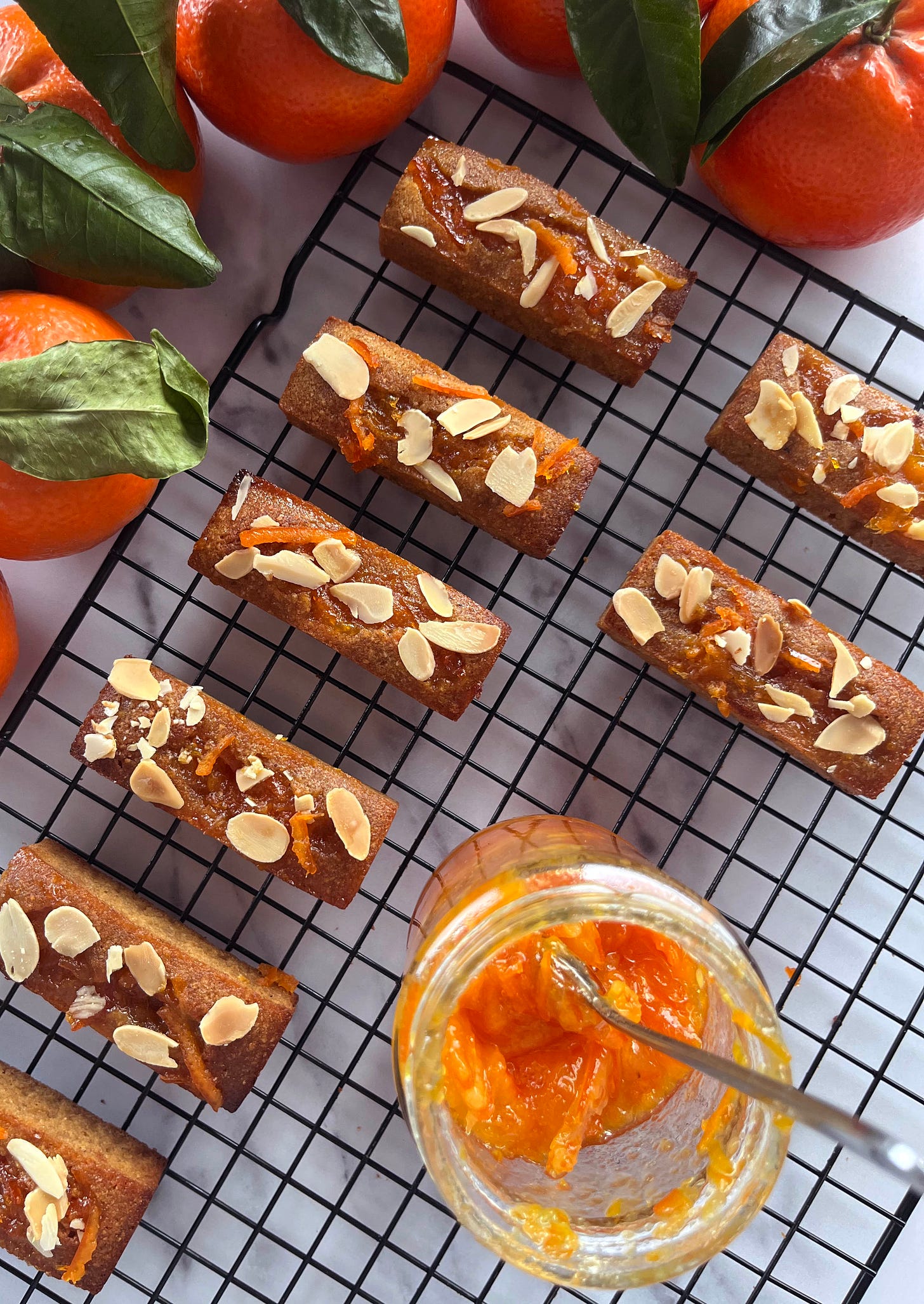


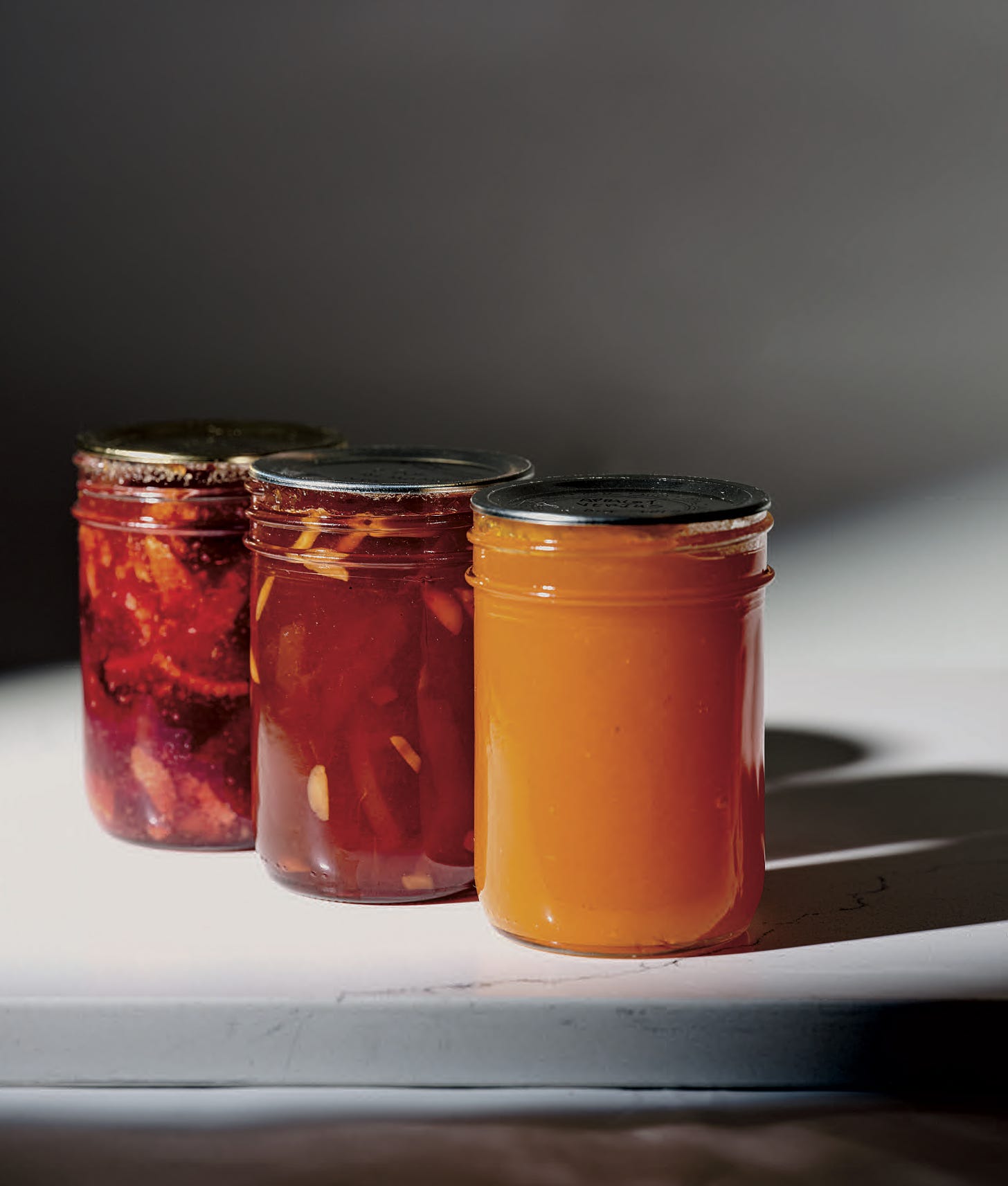
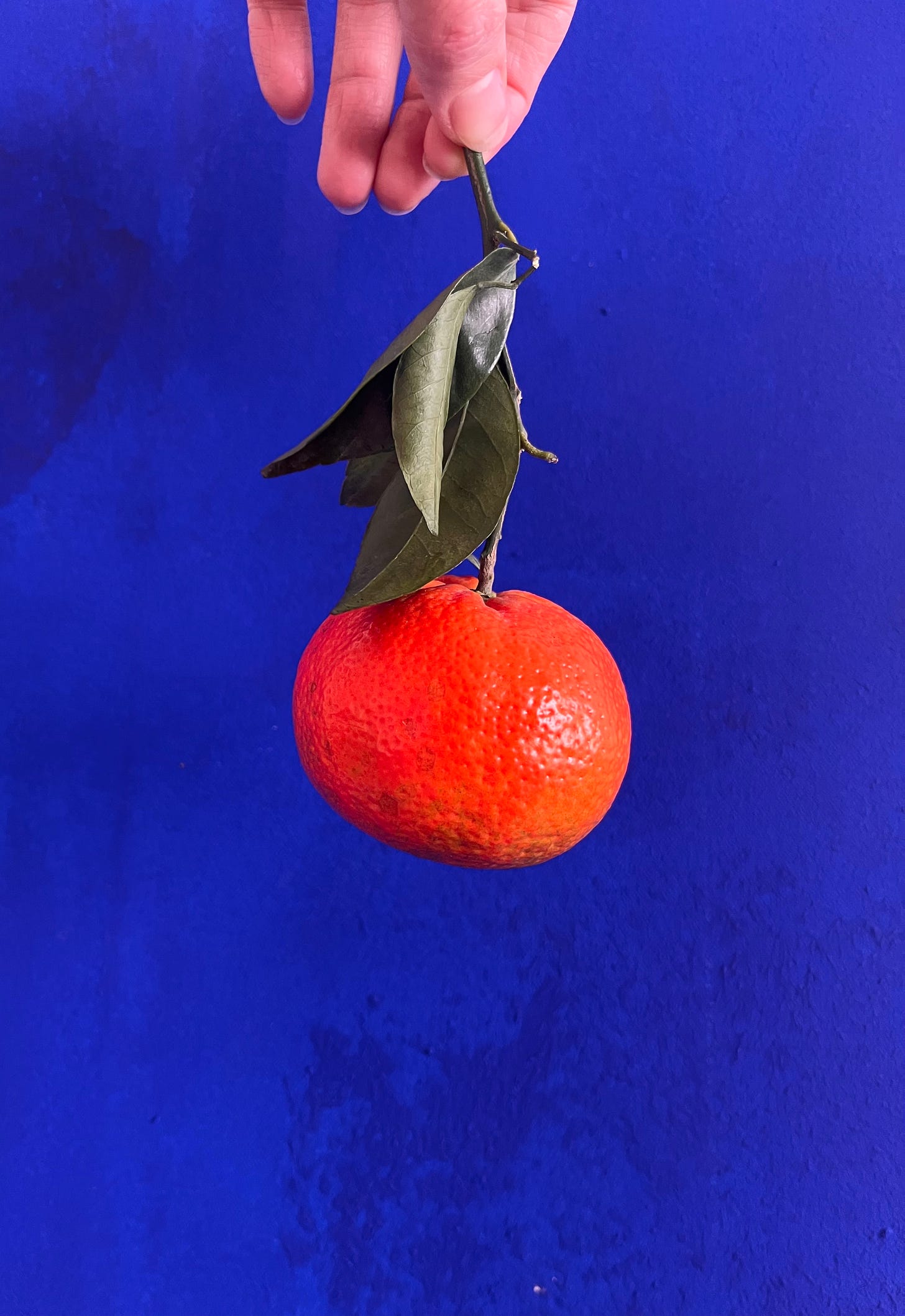
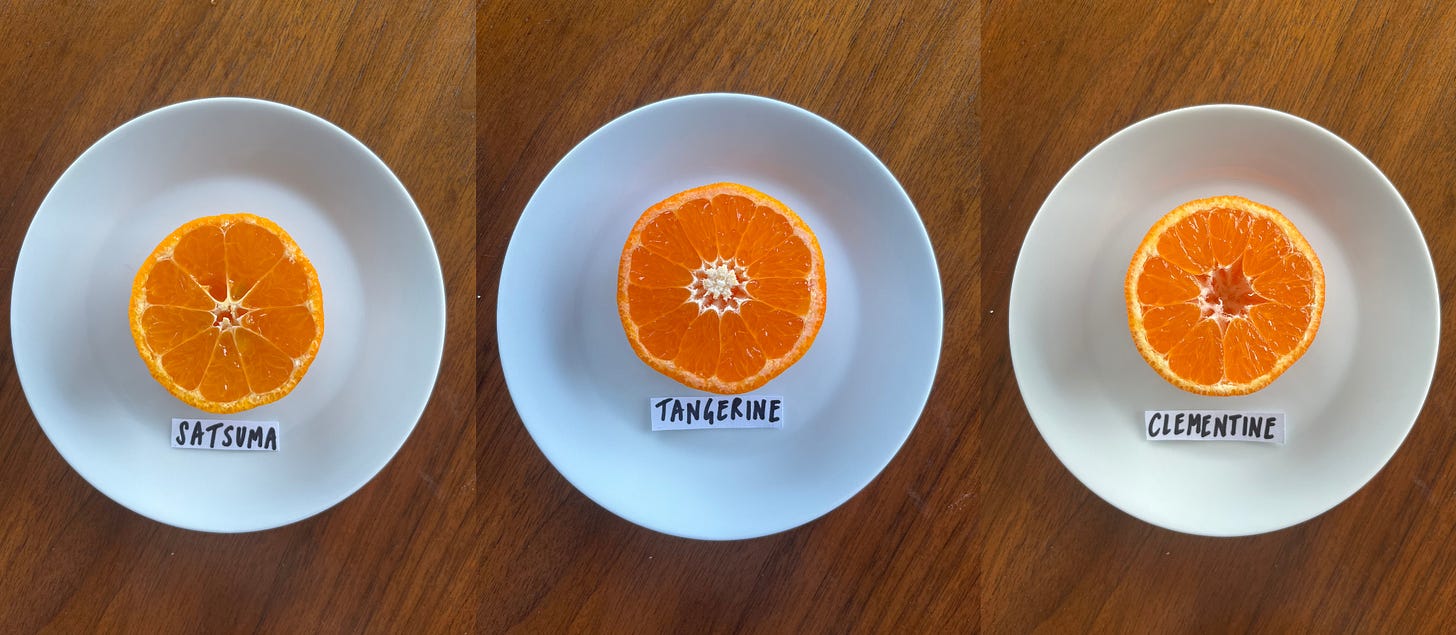


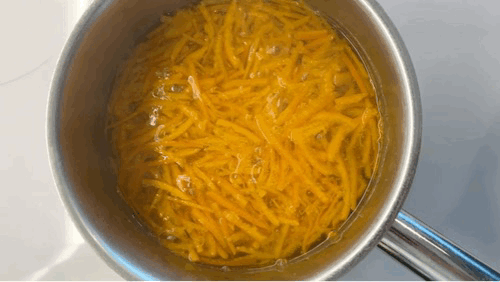



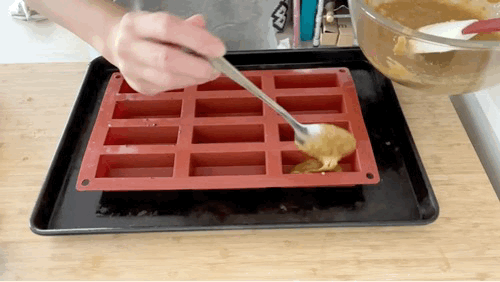

Hi Nicola, I was wondering if you know what brand your silicone mould is? I’d like to get some that shape.
Hi! Would it be possible to bake these in a larger mold?